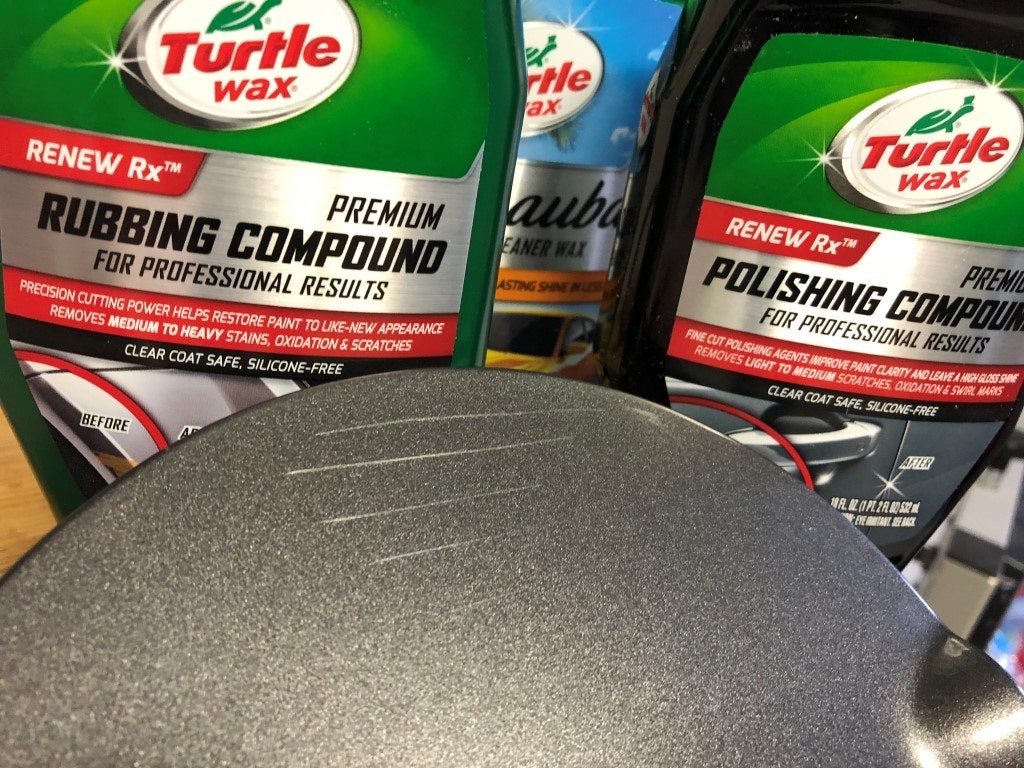Car scratches are an unfortunate reality for car owners. Whether it’s a minor brush against a bush or a more noticeable key mark, these blemishes can detract from your vehicle’s appearance and potentially lower its resale value. The good news is that fixing car scratches at home is often achievable, saving you a trip to the body shop and a hefty bill. This guide, drawing on expert testing and real-world experience, will walk you through the process of assessing and repairing car scratches yourself.
Understanding Car Scratches and Repair Approaches
Before diving into specific products and techniques, it’s crucial to understand the nature of car scratches. Modern cars typically have multiple layers of paint: a primer, a base coat of color, and a clear coat for protection and shine. Most minor scratches only affect the clear coat. Deeper scratches can penetrate the color coat and even reach the primer or bare metal, requiring more intensive repair methods.
The approach to fixing a scratch depends largely on its severity. For superficial scratches that are barely visible, simple polishing compounds might suffice. For more noticeable scratches that you can feel with your fingernail, you’ll likely need to employ more abrasive methods, potentially involving sanding. In the most severe cases, where the scratch is deep and exposes layers beneath the clear coat, filling and repainting might be necessary – although this guide will primarily focus on DIY solutions for light to medium scratches, as these are most commonly addressed at home.
DIY Methods and Product Reviews for Car Scratch Repair
To put various scratch repair products to the test, a controlled experiment was conducted on a scratched test panel. This involved using products from leading brands to evaluate their effectiveness on scratches of varying depths. Here’s a breakdown of the methods and product performance:
Light Scratch Repair: Polishing Compounds and Scratch Removers
For the lightest surface scratches, often appearing as swirl marks or faint lines, polishing compounds and scratch removers are designed to gently buff away imperfections in the clear coat. These products typically contain mild abrasives that level the clear coat around the scratch, making it less visible.
One of the entry-level options tested was a range of products from Turtle Wax, including Rubbing Compound, Polishing Compound, Scratch & Swirl Remover, and Carnauba Liquid Wax. These products, applied by hand with a cloth, are designed for ease of use and affordability.
While the Turtle Wax products offered some improvement in hiding the very lightest scratches when viewed from a distance, closer inspection and under different lighting conditions revealed that even minor scratches remained noticeable. Rating: 4/10
Moving up in effectiveness, products from Meguiar’s were also tested. The Meguiar’s Ultimate Compound, Polish, and Liquid Wax were applied to the same test scratches, again using hand application.
The Meguiar’s products showed marginally better results than the Turtle Wax range, but the improvement was minimal when applied by hand. As Kevin Pennington, an expert in car care, advised, “If the scratch isn’t out after a few passes, you need to turn to a machine.” This highlights the limitation of hand application for more than the most superficial scratches. Rating: 5/10 (hand application)
Medium Scratch Repair: Machine Polishing and Abrasive Kits
To tackle more noticeable or medium-depth scratches, machine polishing offers a significant advantage. Machine polishers provide consistent and more powerful abrasion, allowing for more effective scratch removal.
The Meguiar’s DA Power System, designed to attach to a standard drill, was tested to evaluate the impact of machine application. This system uses an orbital motion, which ensures even coverage and reduces the risk of damaging the paint.
Using the DA Power System with Meguiar’s compounds made a marked difference. Lighter scratches became virtually invisible, demonstrating the effectiveness of machine polishing. However, moderate and deeper scratches still remained, indicating the need for a more abrasive approach for these types of imperfections. Rating: 6/10 (with DA Power System)
For scratches that resist polishing alone, sanding becomes a necessary step. The 3M Trizact Precision Scratch Kit is designed for DIYers to safely sand and repair car scratches. This kit includes sandpaper, rubbing compound, and polish, along with drill attachments for application.
As Kevin Ansell, a senior engineer at 3M, explained, “Most products won’t completely eliminate the scratch, but we can make it less noticeable.” For deeper scratches, some level of sanding is often required to achieve significant improvement.
The 3M Trizact system involves wet sanding the scratched area to level the clear coat, followed by buffing with compound and polish to restore shine. While sanding can seem intimidating, especially on your car’s paint, it is a controlled method for removing clear coat material and effectively reducing the depth of scratches.
The 3M Trizact sandpaper proved highly effective in leveling moderate scratches. After wet sanding, the paint surface became hazy, but the subsequent steps of applying rubbing compound and polish with the drill attachments restored the shine. Light scratches were completely removed, and moderate scratches became almost invisible. Even deeper scratches showed improvement, although they remained somewhat visible.
One drawback of the 3M kit is that the rubbing compound and polish come in single-use packets, which might not be sufficient for multiple repairs or larger areas. Additionally, the sandpaper pieces are quite small, which can make them less convenient for larger scratches and prone to wearing out quickly. Rating: 7/10
Conclusion: Choosing the Right Method for Your Car Scratches
Fixing car scratches at home is a viable option for many car owners, and the right approach depends on the severity of the scratch. For very light scratches, polishing compounds and scratch removers applied by hand may offer a minor improvement. However, for more noticeable scratches, machine polishing and abrasive kits like the 3M Trizact system provide significantly better results.
When tackling car scratch repair yourself, always start with the least aggressive method and assess the results before moving to more abrasive techniques. Practicing on a test panel, if possible, is a good way to get comfortable with the process. With the right products and a bit of patience, you can effectively fix car scratches and keep your vehicle looking its best.


